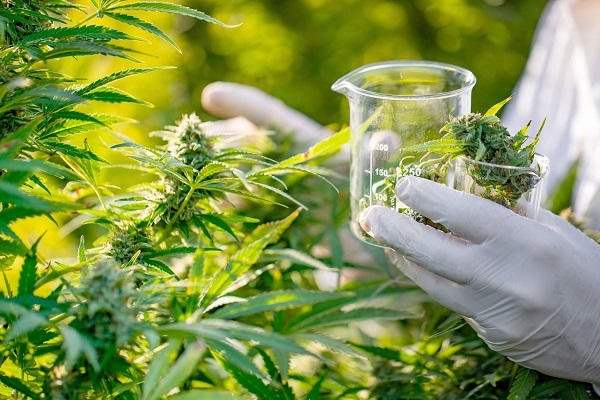Over recent years, the use of medicinal marijuana has skyrocketed, mainly driven by a wave of legalization in several states across the U.S. Medicinal marijuana refers to derivatives of the Cannabis sativa that help to treat certain medical conditions. While it is yet to be approved by the U.S. Food and Drug Administration for the treatment of any disease, a lot of evidence suggests that marijuana can help cure anxiety and pain and is also used in several life-enhancing products like sleeping aids, personal lubricants, sports-recovery balms, and energy boosters.
What Is Cannabidiol (CBD)

Cannabidiol or CBD is an active ingredient that gives marijuana its medicinal properties. It is extracted from the hemp plant or manufactured in a laboratory. CBD does not cause a high and does not cause addiction. The use of medicinal weed has been hampered by a lack of adequate scientific research to back the various claims of its medical importance.
Despite the lack of scientific research, many people continue to use cannabis to treat several ailments, including;
Chronic Pain
Marijuana blocks the active sites of endocannabinoid receptors and lowers the level of pain and inflammation. The endocannabinoid system is responsible for regulating several functions, including pain sensation, appetite, sleep, and immune response.
CBD affects the activity of endocannabinoid receptors and helps to reduce inflammation and alleviate pain. The compound is effective in treating certain types of pain, including back pain and nerve pain.
Due to its anti-inflammatory and pain-relieving effects, medicinal marijuana is used to manage pain in patients suffering from arthritis and cancer, among other chronic diseases.
Anxiety And Depression
There is scientific evidence that supports the possible use of marijuana to relieve anxiety, depression, and post-traumatic stress disorder. A study published in 2015 shows that CBD interacts with the serotonin 5-HT1A receptor, the cannabinoid type 1 receptor (CB1R), and other receptors in the brain to regulate fear and anxiety.
Research in this area is also still sparse. A 2018 study on 3,151 medical marijuana users with depression shows improvement with just two puffs of low-THC and high-CBD pot. When using marijuana to treat depression, the quantity used is a major factor to consider.
Generally, the THC and CBD may help soften fear memories that flood the brain after PTSD triggers, making marijuana a potential treatment for PTSD. Scientists, however, advise against the use of marijuana to treat mental health problems like psychosis and bipolar disorder as there is no scientific research to back up its use in the treatment of mental health problems.
Cancer Pain
There have been a number of studies conducted to establish the effect of medicinal marijuana on cancerous cells. Prior studies have shown the possible use of marijuana to treat nausea and vomiting, which are common side effects associated with chemotherapy. The FDA has approved the use of various cannabinoid synthesized drugs like dronabinol and nabilone for the treatment of side effects associated with chemotherapy.
Some studies have shown that THC and CBD can help slow the growth of cancer cells and reduce the propagation of cancer to other parts. These studies are, however, not enough to make a conclusive decision regarding the use of marijuana to treat cancer. More research is needed in this area to determine the extent of use in cancer treatment as well as the associated side effects.
Apart from the associated side effects, scientists caution against the use of marijuana as a treatment for cancer. The use of marijuana for cancer treatment is based on sketchy anecdotes and questionable research.
Multiple Sclerosis
Multiple sclerosis (M.S.) is a serious health condition that affects many people. The condition causes the immune system to be overactive and damage brain cells, optic nerves, and the spinal cord, which are the main parts of the central nervous system.
Research shows that the use of cannabis reduces muscle stiffness. A study conducted in 2014 also supports the use of cannabis-based treatments for MS-related muscle problems. Cannabis has also been shown to reduce pain in patients suffering from Multiple sclerosis.
Nabiximol (Sativex), an oral cannabis extract, has also been shown to treat bladder dysfunction. More research is, however, needed in this area.
Epilepsy
A 2017 study showed CBD reduces seizures among children with Dravet syndrome. Dravet syndrome is a dangerous condition that causes prolonged repetitive and potentially lethal seizures.
In the study, 120 children and teenagers suffering from Dravet syndrome aged between 2 and 18 were given a CBD solution for 14 weeks. Results showed that children on CBD treatment reduced the number of seizures from 12 a month to around six on average. Three of the children under study stopped getting seizures.
Insomnia
In addition to inducing a ‘high,’ the THC in cannabis also induces sleep. This makes marijuana an effective sleep aid and can be used to restore one’s sleep cycle. A 2008 study shows ingesting marijuana strains with higher THC content reduces the amount of REM sleep, which in turn reduces dreams and nightmares for those experiencing PTSD.
Marijuana helps people suffering from chronic pain and multiple sclerosis to sleep faster. Although there is much research in this area, it is believed marijuana promotes sleep due to its interaction between cannabinoids and receptors in the brain. The cannabinoids bind with receptors and send messages to increase the level of sleep-promoting adenosine. The adenosine also suppresses the brain’s arousal system and induces sleep.
Picks for you:
Opening a Position: What to look for in your forex trading strategies
How to Automatically Transfer Money from Checking to Savings in Bank of America
Conclusion
While not much is known about the use of marijuana for medicinal purposes, previous studies have pointed to its use to treat multiple health conditions. More studies are needed to determine its health benefits. The use of marijuana has been hampered by its classification as a controlled substance. Additional research will uncover marijuana’s health top benefits and open the door for even more legalization of its use.
By Lana Braslavskaia, Editor and Contributor at AskGrowers
